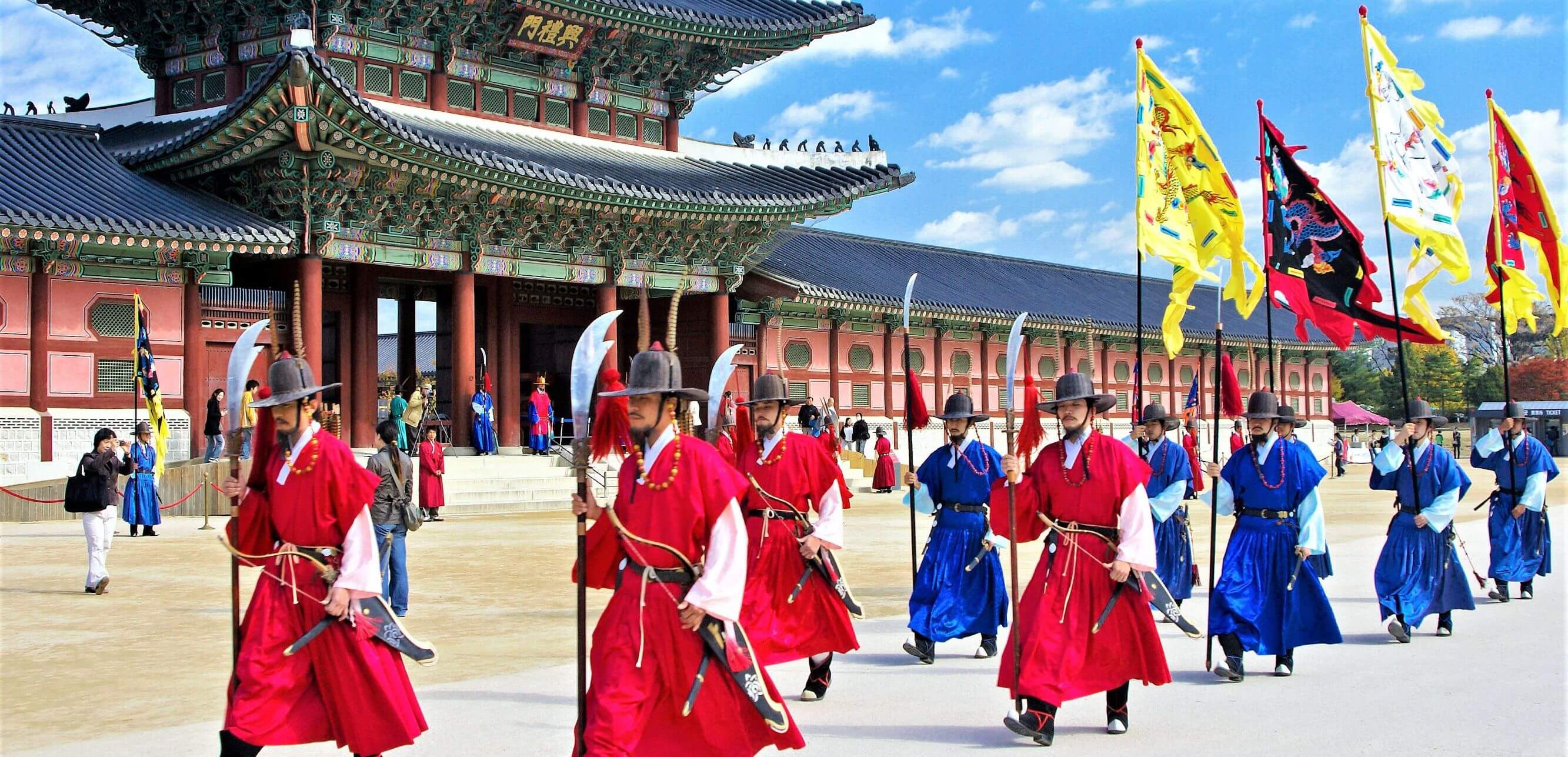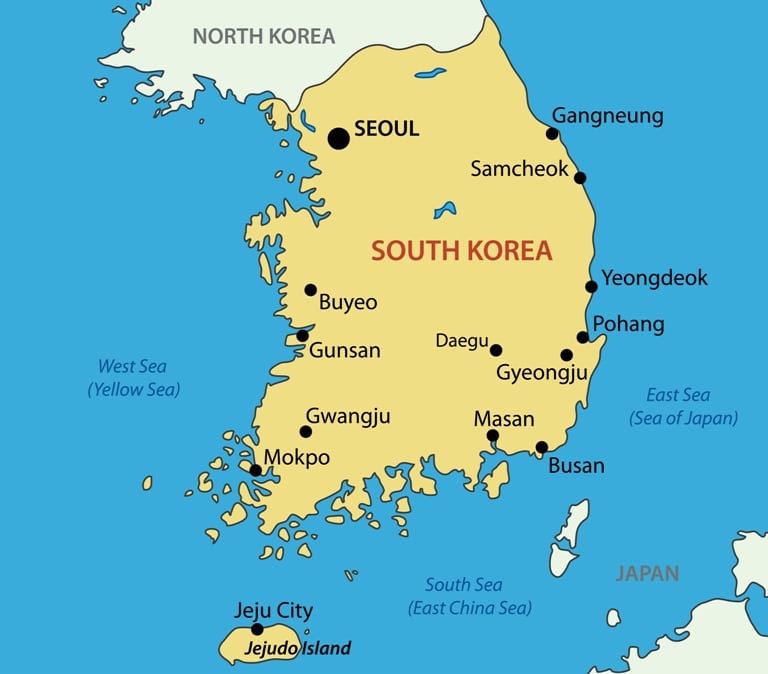


KOREA
GENERAL INFORMATION
South Korea known by many outside the country for its kim chi, K-Pop &Tae Kwon Do martial arts. South Korea’s long history and deep rooted discipline has brought it out of a devastating Korean War to one of the world leaders in technology and beauty products. On the other hand, it still maintains its age old traditions and culture, proving that you do not have to choose between one or the other. Head over to South Korea, where you can enjoy dinner at the top floor of a glittering skyscraper, and then head over to a 600 year old monastery for a meditative session. Most don’t know that for the most of the population lives in only 20% of the country, around the large cities. You will find small villages in the rural countryside and fishing villages along the coast. A perfect place to discover the South Korean pasts and traditions in the Land of the Morning Calm.
HISTORY AND CLIMATE
Mainland Territory: 100,032 square kilometres (38,622.57 sq mi).[
Population: 51,271,051 (2019)
National Capital: Seoul
International Calling Code: +82
Historical Timeline:
- 668 AD: The Silla unite the three kingdoms of the Korean peninsula — Silla, Paekche, and Koguryo — establishing the Silla Dynasty and beginning a decade of fighting to expel the forces of China’s T’ang Dynasty.
- 936: General Wang Kon overthrows the Silla and establishes the Koryo Dynasty. The English word Koreacomes from
- 1392: General Yi Song-gye, a Confucian scholar, overthrows the Koryo dynasty and founds the Yi Dynasty. The kingdom is renamed Choson.
- 1443: Hangul, the Korean phonetic alphabet, is invented.
- 1592: Japan invades Korea. With help from China, Korea repels the Japanese forces.
- 1627: Manchuria attacks northwestern Korea in preparation for a larger attack on China.
The battles in 1592 and 1627 result in the loss of many cultural artifacts and assets and the weakening of the centralized government.
- 1876: Following a treaty with Japan, Korea’s mostly isolationist policies shift, and the peninsula is opened up to the West.
- 1894: The Donghak Peasant Revolution, a series of anti-feudal attacks on government officers. The Korean government asks for aid from China. The Qing Dynasty of China sends 2,700 soldiers to help without alerting the Japanese, in violation of the Treaty of Tientsin.
- This begins the Sino-Japanese War for control of Korea between its two co-protectorates, China and Japan.
- April 17, 1895: The Treaty of Shimonoseki ends the Sino-Japanese war; Korea gains independence.
- 1904-05: The Russo-Japanese War. Japan defeats Russia in a battle for influence in Korea and Manchuria.
- 1910: Japan formally annexes Korea, bringing the Yi Dynasty to an end. Japan makes efforts to supplant Korean language and culture.
- 1945: World War II ends, and Korea is divided at the 38th parallel. Administration of the two halves is divided temporarily, with the USSR administering the northern half and the USA administering the south.
- 1948: Two separate nations — North Korea and South Korea — are formally established.
Best time to travel to Korea:
- High Season: April – May, September – October
- High Tourist Season: June – September
- Low Season: November – March
- Ski Season: December – February
- All Seasons: April – May (spring), June – August (summer), September – October (fall), November – March (winter)
The best time to visit South Korea is between April – May, and September – October, when the weather is perfect, and the tourist numbers are low.
The high season is between June and August, and this is when most of the local and international tourists visit the country, so expect higher prices, and sweltering heat.
July is a bad time to travel as the weather will be hot and there is heavy rainfall throughout the peninsula.
November to March is winter, which is rather cold. But, if you are a fan of skiing, you should definitely visit the country between December and February, when there is sufficient snowfall for sporting activities.
South Korea is a spectacular country, one that has maintained its culture and tradition for hundreds of years, safe from foreign invasion for a long time. Sure you’ve heard about chic and modern South Korea thriving metropolises like Seoul, Busan and Jeju-si. However, there is more to the country than just that. South Korea is also about rice paddies and mountains studded with pine trees. It is full of immaculately constructed monasteries and temples, and beautifully touching Confucian ceremonies. To explore all of this and more, you need to know when to visit South Korea.
The weather in South Korea is best during spring (April – May) and fall (September – October). During these months, the tourist footfall is lower, and the summer heat and the winter cold are more mild. good time to travel to South Korea is between December – February, when the Taebaek Mountains get their snowfall. This is the ideal time to go skiing, and indulge in other winter sports!



